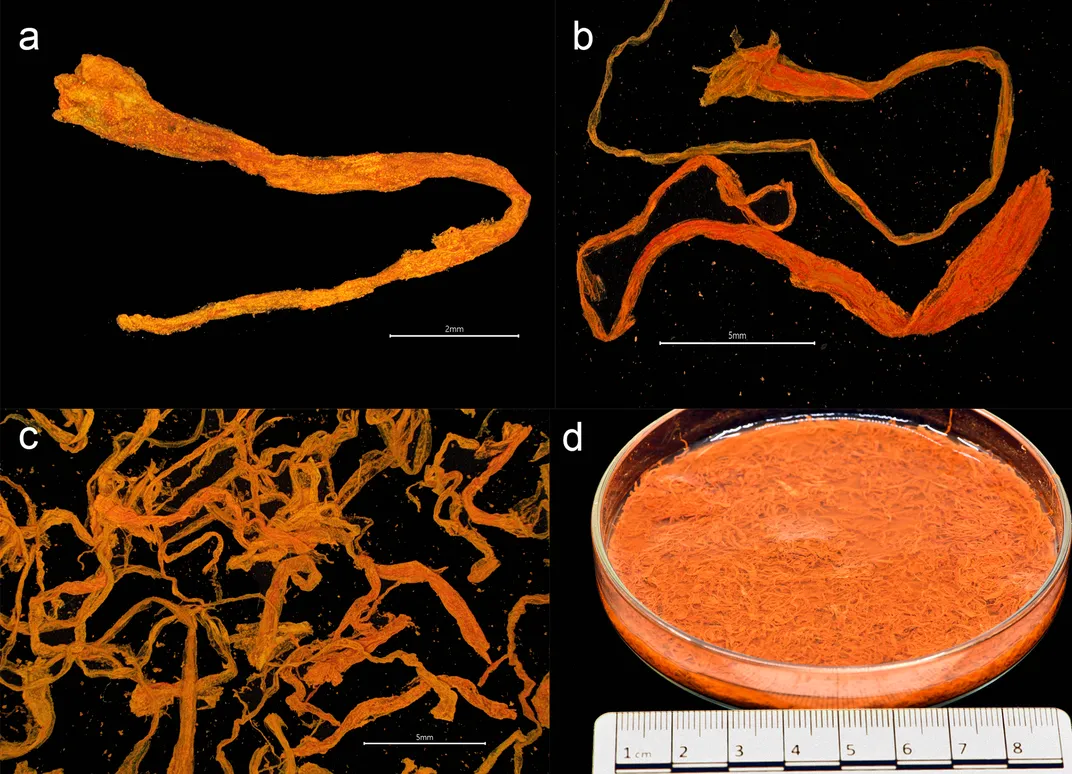
In the summer of 1495, King Hans of Denmark and Norway set sail for Sweden with hopes of becoming the king of Sweden and unifying the Nordic region. However, his grand plans were disrupted when his warship, Gribshunden or Griffen, mysteriously caught fire and sank in the Baltic Sea. Recent archaeological excavations have unveiled an astonishing find—the remains of a royal medieval pantry preserved for over five centuries underwater. This discovery offers a unique window into the lives and culinary tastes of the Baltic nobility, shedding light on their connections with the broader European region and their sophisticated consumption patterns.
Unveiling the Sunken Pantry
Archaeologists from Lund University in Sweden made an extraordinary find during their recent excavation of the sunken Gribshunden. They uncovered a rich assortment of 40 different types of fruits, vegetables, spices, nuts, cereals, and other plants, forming a “substantially complete royal medieval pantry.” The study co-authors, Mikael Larsson and Brendan Foley, highlight the significance of this discovery, as it provides valuable insights into the lives and dietary habits of the Baltic region’s nobility.
The Connected Nordic Region
Contrary to the perception of the Nordic region as an isolated backwater, the findings indicate a vibrant and interconnected group of emerging nation-states with their unique style and consumption patterns. The nobility of the Baltic region showcased a sophisticated and diverse culinary culture, rivaling that of their counterparts on the European continent. Brendan Foley emphasizes the importance of recognizing the Nordic region’s influence and its role as an active participant in the cultural exchange of the time.

Exquisite Spices and Exotic Flavors
The excavation revealed a treasure trove of spices sourced from far-flung corners of the world, including ginger, clove, peppercorns, dill, mustard, caraway, and the prized saffron. These spices would have added a delightful array of flavors to the noble households’ culinary creations. The abundance of saffron, in particular, stands out as an extraordinary find, as it has remained rare and highly valued throughout history. Even after 527 years submerged, the saffron retains its distinct aroma, serving as a testament to the remarkable preservation conditions offered by the Baltic Sea.
Fruits, Vegetables, and Nuts from the Depths
The underwater excavation also unearthed the remains of various fruits and vegetables, including cucumbers, grapes, raspberries, blackberries, almonds, and hazelnuts. These culinary delights would have graced the tables of the Baltic nobility, showcasing their appreciation for diverse flavors and a desire to indulge in nature’s bounties. The discovery of these plant remains in remarkably good condition is a testament to the cold and low salinity of the Baltic Sea, providing an ideal environment for the preservation of archaeological materials.

The Quest for the Sunken Gribshunden
The remains of Gribshunden were first discovered by divers in the 1960s and ’70s, but it was only in the early 2000s that researchers began to suspect its medieval origins. In 2019, a comprehensive research initiative was launched, aiming to uncover more of the vessel’s secrets and shed light on the historical significance of this sunken marvel. Built in 1485, Gribshunden was an impressive warship that served as King Hans’ mobile office during his travels. It boasted a combination of northern European and Mediterranean shipbuilding styles, symbolizing Hans’ ambitions to consolidate his kingdom and exercise economic, social, cultural, administrative, and political power.
Hans' Legacy and the Rise of the Nordic Region
While the sinking of Gribshunden hindered King Hans’ plans, he eventually achieved his goal of becoming the king of Sweden in 1497. His reign, however, proved short-lived as Swedish nobles reinstated Sten Sture as the nation’s leader in 1501. Nonetheless, Hans continued to rule over Denmark and Norway until his death in 1513. His ambitious pursuits, represented by the grandeur of Gribshunden, played a crucial role in shaping the broader Nordic region and its trajectory in the years to come.

The discovery of the sunken pantry from the Gribshunden offers an extraordinary glimpse into the culinary world of the Baltic nobility in the late 15th century. It challenges the notion of the Nordic region as an isolated backwater and highlights its vibrant connections with the wider European continent. The assortment of spices, fruits, vegetables, and nuts found in the pantry speaks to the sophisticated tastes and diverse consumption patterns of the Baltic nobility. This remarkable underwater preservation provides a window into a bygone era and reinforces the significance of the Baltic Sea as a custodian of history. The story of the sunken Gribshunden serves as a testament to the resilience of our collective heritage, continuously revealing new insights into the intertwined realms of history, culture, and gastronomy.
